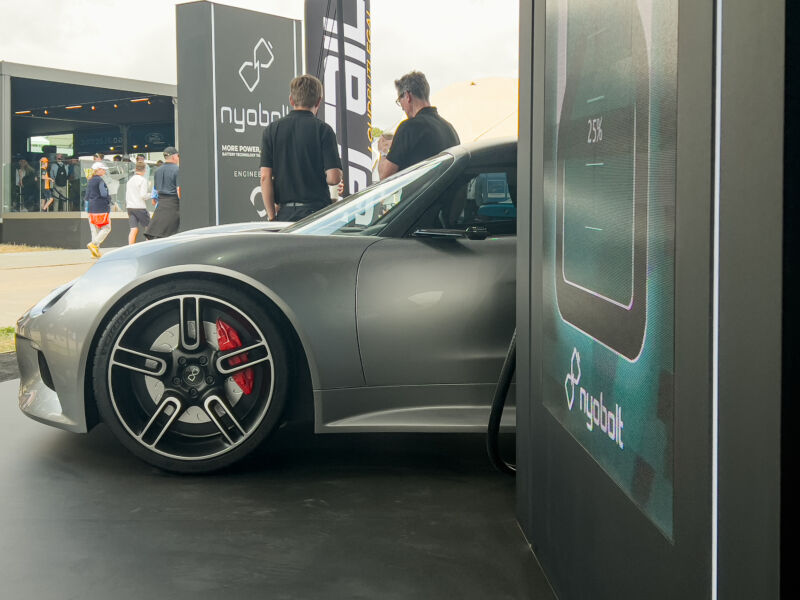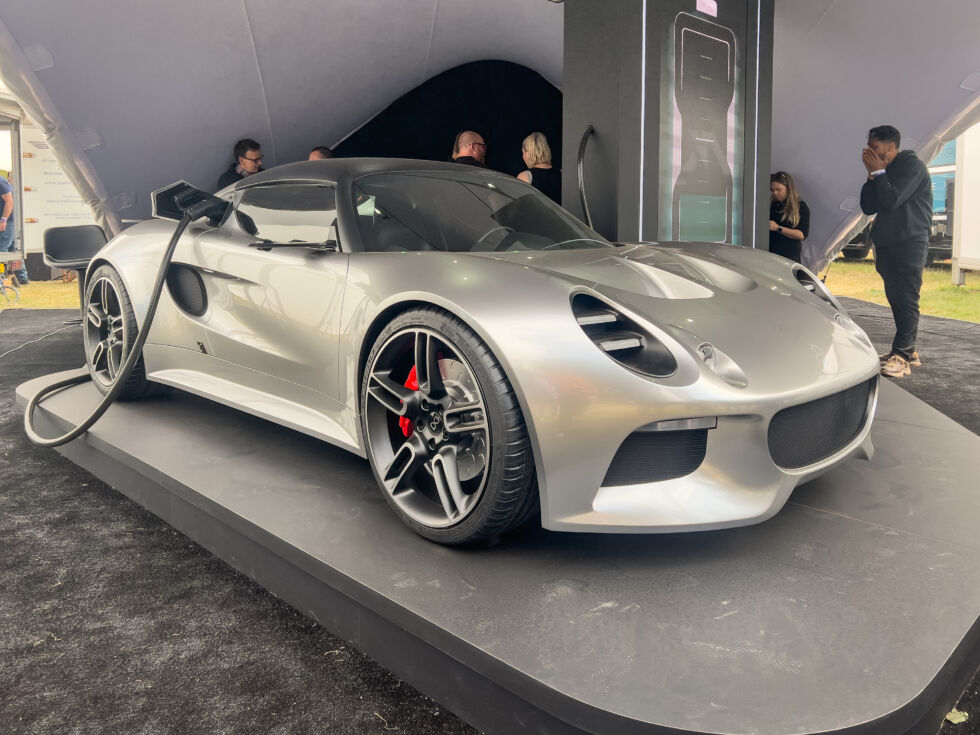
GOODWOOD, England—When is a Lotus Elise not a Lotus Elise? When it's the Nyobolt EV—which, to be accurate, is actually a stretched Lotus Exige chassis with new bodywork designed by Julian Thompson, who styled the original Elise in 1996. Delightful though the little sports car is, what's under the skin is even more intriguing. The concept showcases a new battery technology that promises more rapid DC charging than any electric vehicle currently on sale.
As just about everyone who has driven one knows, EVs really are better at almost everything. They're three to four times more efficient than vehicles that burn gasoline, there are fewer moving parts to break, they're quieter and smoother, and they offer near-instant torque.
But it still takes longer to recharge a battery than refill a gas tank, and EV charging locations don't shout their presence with 50-foot ad displays along highways. That's engendered a general sense of range anxiety among many car buyers, leading car makers to pack their EVs with bigger batteries in an effort to beef up their range numbers. And that, in turn, makes those EVs heavy and expensive.
"Our dream is 10 miles/kWh. I don't know if electric cars can get there or not, but we're certainly looking at things [that] potentially enable [up] to 10 km/kWh, for example," said Steve Hutchins, VP of operations and engineering at Nyobolt, the British battery startup responsible for this project. "You've got to have a slippery car, and you've got to have a lightweight car. So our part is the lightweighting part."

Nyobolt is commercializing research originally conducted at the University of Cambridge using niobium tungsten oxides for battery anodes. "Charging is when the lithium ions go into the anode. So it's more to do with the mobility of the lithium ions than anything else," explained Hutchins. "Ninety-five percent of the world's cars have graphite anodes. They've got a layer structure, and the gap is bigger than the lithium ions, so the lithium-ion can go in, but the mobility is limited. We've been developing anode materials, started at the University of Cambridge, where the mobility is up to 100 times higher."
"Mobility in the anodes is one thing, but to get a fast-charging cell—it's basically the same as high power cell—the electricity goes one way or the other; you still have to have very low resistance to do that," Hutchins continued. To that end, Nyobolt has developed the niobium anode materials in the UK, and another team in the US—"basically the team from A123 that developed the Formula One KERS cell; we just got there at the right time as they were laying people off," according to Hutchins—developed the cathode.
"And then back in the UK, we've got a team of system engineers who are then putting the electronics on that, doing the software and turning it into a battery," he said. "Because we found it's not very compelling to the customer with a bag of white powder. But if you can show them something actually working, charging quickly, again and again, that's different."
Reader Comments (256)
View comments on forumLoading comments...